
Many young athletes grow up with a goal of reaching the Olympics and the glories of their sport’s highest levels. It is no different for equestrians, whether they ride English, Western, vault, or drive a carriage. From playing with plastic ponies and taking their first riding lessons, to finding success in the arena, thousands of horse lovers hope they can one day represent the United States in international competition. Riding for the Team chronicles the lives of those who dreamed about competing for their country and “made it,” sharing inspirational stories from the international governing organization’s eight equestrian disciplines: show jumping, dressage, eventing, driving, vaulting, reining, endurance, and para-dressage.
McLain Ward Show | Jumping
“I’ve had a lot of practice coming back from some really difficult times, whether they are personal or family situations, good and bad, my own regrets and missteps.
“What am I proudest of in my career? It’s not an individual win or individual moment, though I’m proud of those. They do, however, become a blur. Instead, I’d say, when those difficult times are public, I’m proudest of being able to deal with and face them, to be able to find the right course—that doesn’t mean whether I was at fault or not at fault—to always move toward being a better rider, a better horseman, a better person.
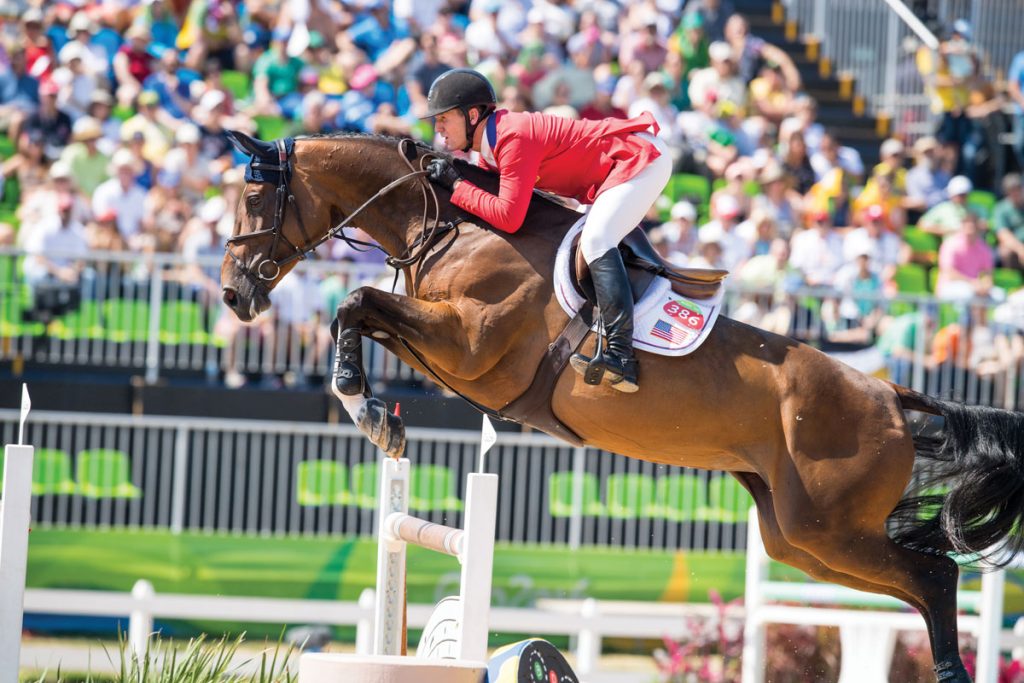
“I do it all against the backdrop of the many changes in show jumping that have taken place during my career. It’s evolved as all sports have, and all businesses, for that matter. We certainly have gotten more and more away from the nature of the sport—it’s become more of an arena sport. That’s to do with public relations and selling our sport and making it interesting for people to follow. At the highest levels, the sport is being done better than it’s ever been done. You realize it when you sit in Barcelona for the Longines FEI Nations Cup Final and see rider after rider from a pretty wide number of regions of the world come in with almost perfect form.”
Debbie McDonald | Dressage
“My story is not typical as I celebrated my fiftieth birthday at my first Olympics in 2004, where the United States won team bronze. In our sport, age is not as much of a factor as it would be in track and field or volleyball—if you have the right horse and can keep yourself fit enough to compete.
“I had an amazing career with my horse of a lifetime, Brentina. She was the one who put me on the map. We had 14 wonderful years competing together through the levels, with nine years at Grand Prix. I brought her along from First Level after my sponsors, Peggy and Parry Thomas, purchased her at the 1993 Verden, Germany, Hanoverian auction. On the day the Thomases bought Brentina, Bob told them, ‘This will be the best horse you ever own.’ And he was right.
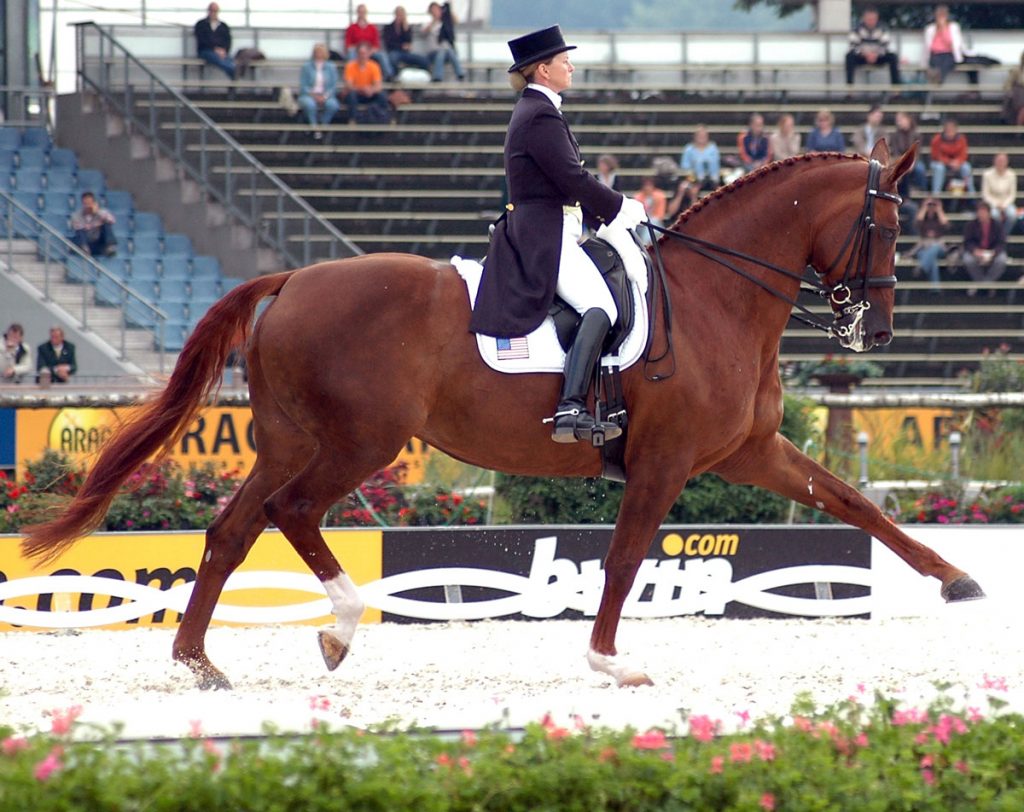
“After doing the basics at home and working with Steffen Peters, who would become my teammate on the U.S. squad, I went to Germany to work with then-U.S. Coach Klaus Balkenhol. Three months there improved my technique. My big breakthrough with Brentina came at the 1999 Pan American Games in Winnipeg, Canada, where we earned team gold and I took individual gold on this wonderful mare. “As the time drew closer for Brentina to retire at age 17, I was realistic about my own future. I decided to stop competing, seeing an opportunity to give back to the sport that had served me so well, and try to help younger riders get to the Grand Prix level.”
Boyd Martin | Eventing

“It was just before the 2004 Olympics, and I wanted to be on the Australian team. The Sydney CIC three-star was a selection requirement. I felt like a real contender until my horse tired badly halfway around the cross-country. He left a leg, tumbled over and bowed a tendon. Walking the horse all the way back to the stables, I was just crushed.
“Looking back on it, I wasn’t ready to go to the Athens Olympics. While I’d won a four-star, I was green. I don’t think I would have been good at the Athens Games. It probably was just as well I didn’t make the team. I wasn’t trained and seasoned enough. I probably wasn’t sufficiently focused, either.
“Luckily for me, a nice-looking German woman came over about that time and cheered me up. You don’t get too many Europeans in Australia. I gathered my courage and asked her to the races with a group of guys. It was a terrible idea. We took her to a restaurant and ordered wine, before realizing we didn’t have any money. But she forgave me, and we got married. It’s hard to find a life partner who understands our game. Silva’s been incredible in her impact on my life, and she settled me down a bit.”
Suzy Stafford | Driving
“I was 20 when I started my success in combined driving with ponies, after an accident in 1997 derailed my eventing career. While I was helping a student, her horse fell on me, and I broke my ankle. It didn’t heal properly, and the cartilage in the joint died, which meant I had to have it fused. I could still ride, but riding competitively was really painful. I knew I couldn’t be as good a rider as I wanted to be, so that’s why I decided to change disciplines, to find something in which I was competitive enough that it would make me happy.
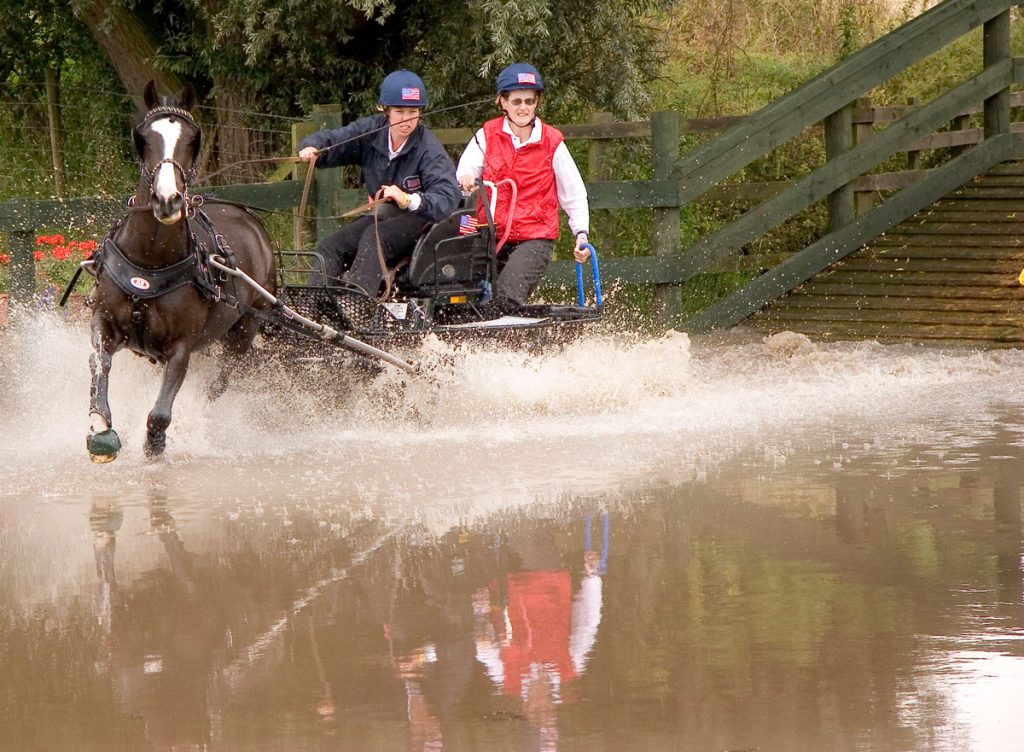
“I met pairs driver Lisa Singer during the time I was riding because I was looking for something different to get my father, Bill Stafford, for Father’s Day. I thought driving lessons would be fun for him. He bought an old Standardbred and took lessons from Lisa for a year or so. In the process, I got to know Lisa, and she asked me to help her at shows, even though I didn’t know anything about driving.
“I sold my event horse and bought a pony, a cart, and a harness—sort of a ‘starter kit’—and took lessons once a week. At the time, I had a full lesson barn for riders and used to teach Pony Club. But I didn’t feel I was doing a good enough job because I couldn’t really school my students’ horses that well, due to my injury. Then I just decided, ‘If I’m going to change gears, I’m going to change gears.’ So I shut down my barn and went to work for Lisa full-time as her assistant trainer.”
Becca Hart | Para Dressage
“While I’m a professional rider and athlete, unlike most able-bodied riders at the top level and some para riders, I do not have my own equestrian clients. I work for Starbucks in Wellington, Florida, basically managing the floor while I am head barista. Starbucks has been an amazing support to me. They were my first corporate sponsor, and I’ve been part of their elite athlete program since the Games in 2008. I’m financially backed by them. I can take six to eight weeks off to go on a European tour and still have a job when I come back. The ability to have my outside job and maintain my competitive career is huge. Starbucks has been incredibly flexible, where with other, more traditional jobs that is not always the case.
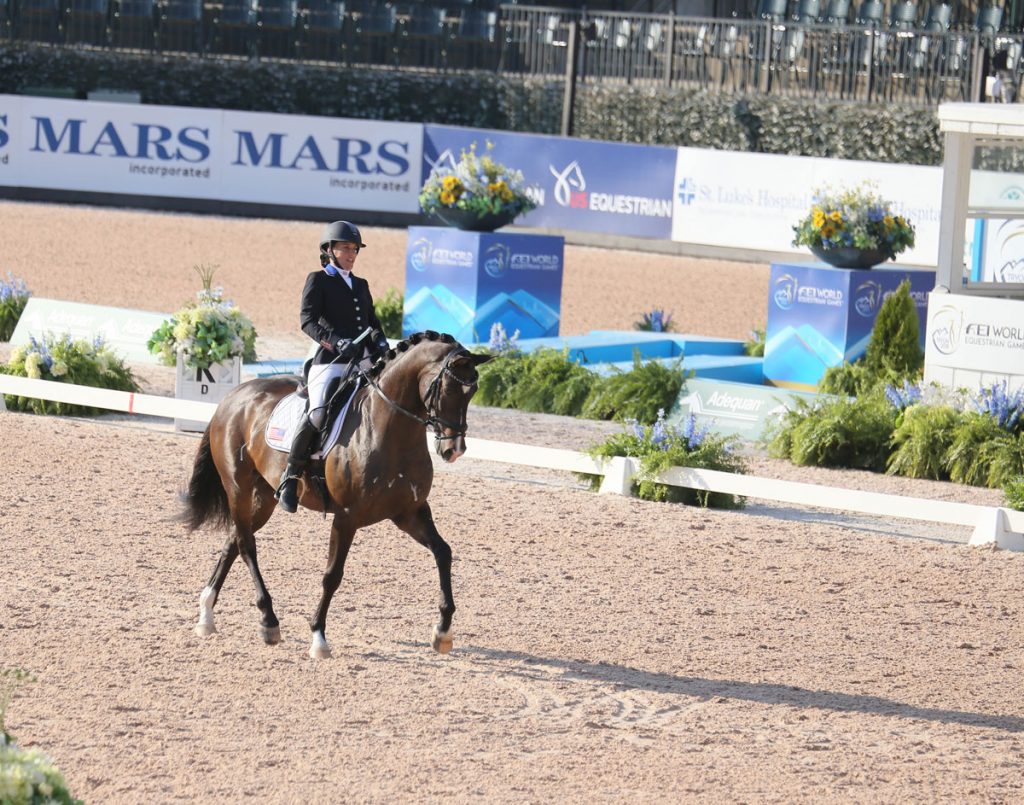
“I have watched para-equestrian grow; it used to be like an intercollegiate-type sport, where there would be a pool of horses and you would draw a horse. You’d have about three hours to kind of figure each other out and then you would trot down centerline on the international stage and kind of hope for the best. The game totally changed when we could use our own horses, which started for the Paralympics at the 2004 Athens Games. It was the catalyst that grew para sport into what it is today. The quality of the horse, the riding, the training skyrocketed. The word ‘para’ does not refer to being a paraplegic or a disabled person. It refers to being parallel to able-bodied sport. When we switched to our own horses, it truly grabbed that parallel, and we are held to the same standards and regulation as able-bodied sport.”
Andrea Fappani | Reining

“I was a non-professional reiner in Italy when pro trainer Todd Bergen from Oregon came for a big show. He saw me riding when I was 17 and asked if I would be interested in coming to the States and working. I told him I never gave much thought to making reining a career. It was always something I would have on the side as a hobby while keeping the dairy farm going. But when he asked me that, it made me think, ‘Maybe I’ve got something he saw that means I should pursue reining and not just keep it as a hobby.’
“A few years later, I came to the States and worked for him, beginning on a trial basis and then becoming his assistant trainer. He was the first and last person I ever worked for.
“At the time I started with him, he was further ahead in the training than many others. I admired so much the way his horses looked, almost like dressage horses rather than the Western discipline. He knew how to put a horse in a body position that was collected, to where it was driving from behind with shoulders up. Maybe it was my background in English riding that attracted me to a horse that was more collected in a better body position, at least in my opinion, to do the maneuvers.”
Valerie Kanavy Endurance
“A fellow who worked with my husband Larry was married to Michelle Schofield, who owned horses and fox hunted. She invited me to go riding and took me over some jumps, something I had never experienced before.
“‘You actually can ride,’ my new friend marveled. So she started taking me fox hunting. I felt it was like, ‘Oh, wow, this is what horses were made for.’
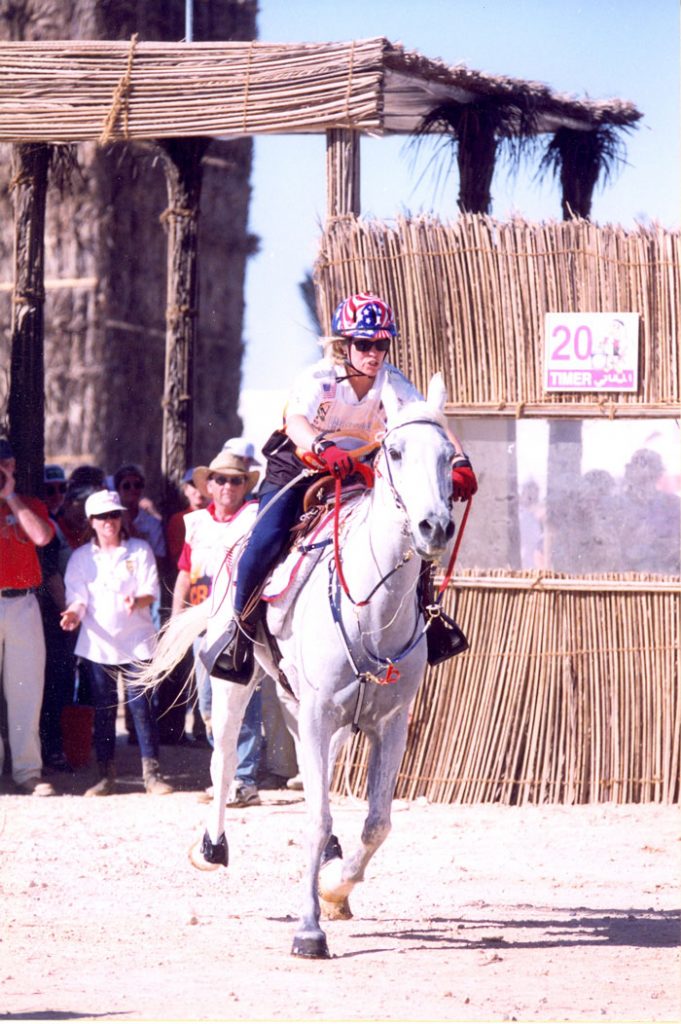
“I always say that the day I met Michelle was the most financially disastrous day of my husband’s life, because that’s what pulled me back into horses.
“There was an Arabian farm in Wichita, Kansas, Jameel Arabians, and the owner, Owen McEwen, would sometimes bring his Arabians to local shows. Even though I was living in Quarter Horse country, I thought the Arabians were to die for.
“When I became serious about fox hunting, I returned to Wichita, and bought a Quarter Horse and a yearling Arabian filly from Jameel Arabians. I was fox hunting the Quarter Horse as the Arabian was growing up. Eventually, I began fox hunting her.
“I didn’t know it wasn’t kosher to hunt on an Arabian. I didn’t know they weren’t supposed to jump. I didn’t know anything. But at the end of the day out hunting, my little Arabian’s tail was still in the air as she was jigging her way home, while the other horses were kind of crawling back to their trailers.”
Megan Benjamin Guimarin Vaulting
“Victory has a bit of a script, and I didn’t follow any of it. I had accomplished my biggest goal—becoming World Champion—four years early. I hadn’t been prepared for it all to come together. I hadn’t been prepared for it all to end.
“From the time I was eight until age 18 when I won the gold, I ate, slept, breathed, and dreamed vaulting. Nothing else. It’s what allowed me to become champion, sure, but it also handicapped my identity. I was a vaulter, an athlete, and a horsewoman, but what else? What would I work toward now that I had reached the top of my sport?
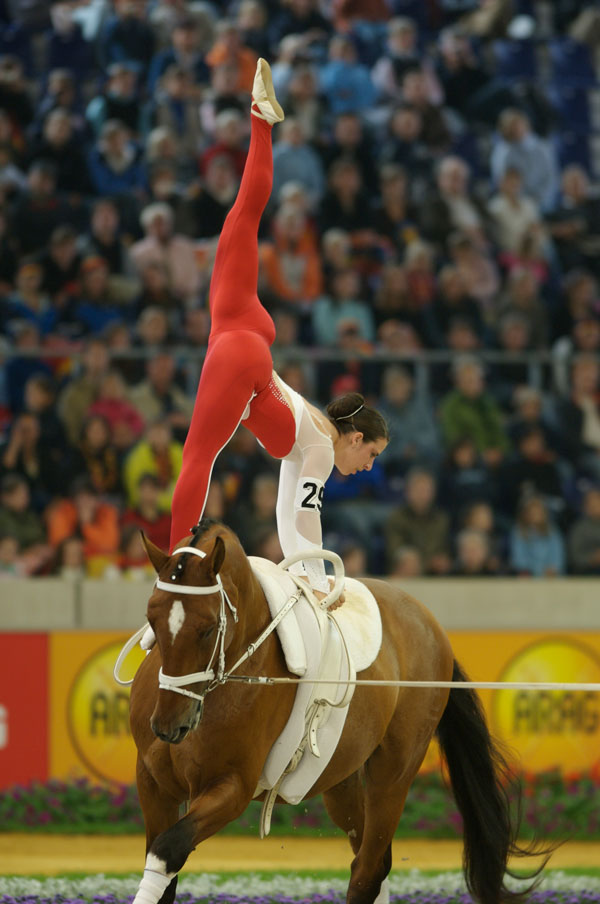
“Sharing a wagon in the closing ceremonies parade, I asked Kai Vorberg, the 2006 Individual Men’s World Champion, how it felt to have earned his title.
“‘The sun still rises and the sun still sets,’ he said coolly in his German-accent.
“I nodded, but I only started to understand what he meant by that years later. I learned that winning the WEG was absolutely one of my life’s greatest moments. It was also just one moment, one day bookended by a sunrise and a sunset. There would be other great days, and while this may have been the pinnacle of my vaulting career, it didn’t have to be the pinnacle of my life.”
